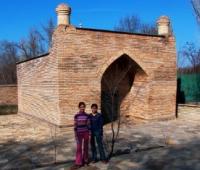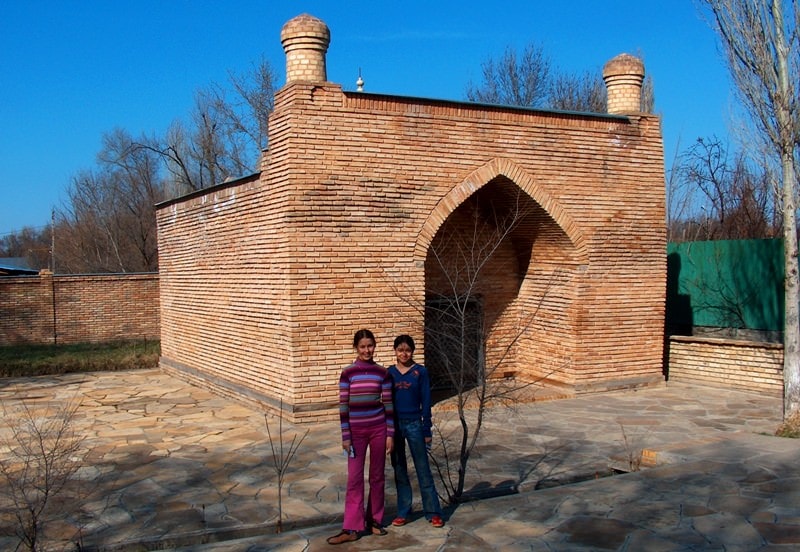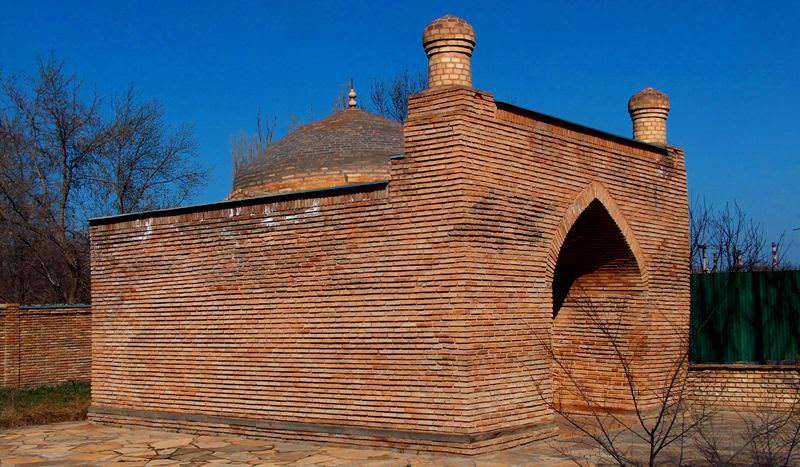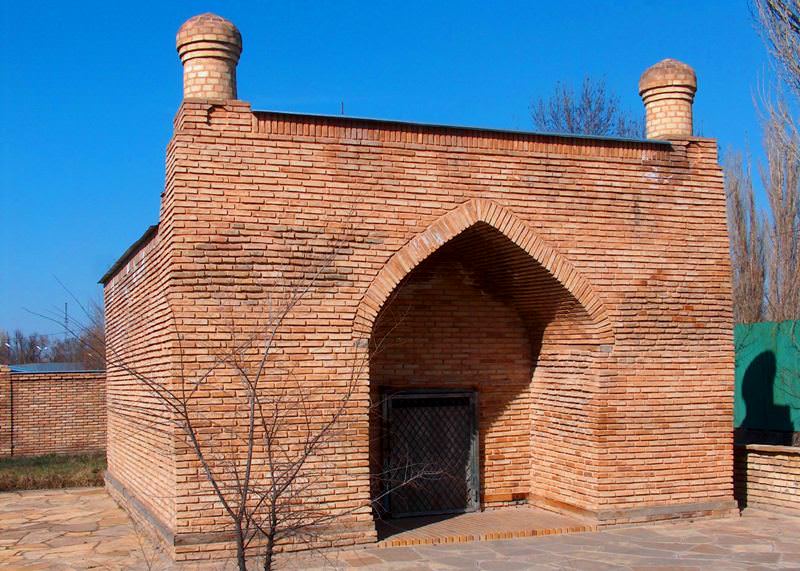You are here
Mausoleum Dautbeka.

Tour to ancient mausoleums Zhambyl province.
"The deceased owned a sword and pen. He was a defender of the Koran and the faithful"
Book local tours in Kazakhstan.
The mausoleum of Dautbek Shamansur is located in the central part of the modern city Taraz, Zhambyl region. This mausoleum was erected over the grave of one of the Mongol governors Ulugh Bilge Ik-balhan Dautbek.
This monument of architecture is best known among local population as the mausoleum of Shamansur. The location of the burial monument is not accidental, because the mausoleum of Karahan is sitiauted next to it, and the whole territory, once belonged to rabad, is the ancient city Taraz.
A short historical background, rabad (arabic - suburb) is a craft and commercial suburb in the cities of Central Asia and Persia in the VII - VIII centuries. Rabad belonged to Shahristan.
In the IX - X centuries rabad becomes the center of economic and political life of the eastern feudal city. In the XI - XII centuries when the Mongolian governor was buried his mausoleum was in the heart of the ancient medieval town.
The landmark represents the mausoleum designed as a square portal-dome structure and built of burnt bricks. Its portal is low and sleek with two small towers on the sides. The portal is tightly drawn nearer tothe dome of the mausoleum.
The doors of the mausoleum are decorated with fancy oriental patterns. The arches and the walls of the mausoleum are the basis of the squat domes. A tombstone in the form of stone step pyramid is placed in the center of the interior.
The whole construction of the mausoleum is built of flat baked bricks. The architect and the builder are unknown. The mausoleum got its modern appearance in the second half of the XIX century as a result of numerous reconstructions and rehabilitations.
With great probability, initially, the mausoleum looked like a roton type small construction on four semicircular arches which supported the dome. The arches rested on stone foundations made of slabs.
The arabic inscription indicating the date of Dautbek Shamansur's death – 1262 is cut at the funeral pyramid. This message was studied and read twice by the scientist V.V. Bartold in 1893 and the academician A.M. Belenitsky in 1939.
The literary translation of the inscription into modern language reads as: "The deceased owned a sword and pen. He was a defender of the Koran and the faithful". Here and now the mausoleum has been twice restored, its restoration was carried out by Zhambyl restoration workshop in 1981.
The designer of the restoration project is Kuandikov. In 2001 - 2002, extensive restorations were carried out by the organization RSE "Kazrestavratsiya." In 1982, the mausoleum of Dautbek Shamansur was included in the list of the historical and cultural monuments of national significance and taken under state protection in the framework of the project "Monuments of ancient Taraz", and in 2008 it was distinguished as a separate cultural and historical place.



Authority:
«Monuments of the Central Asia». The author of M. Khahsimov. Publishing house, Saga, 2001. http://culturemap.kz
Photos
Alexander Petrov.







